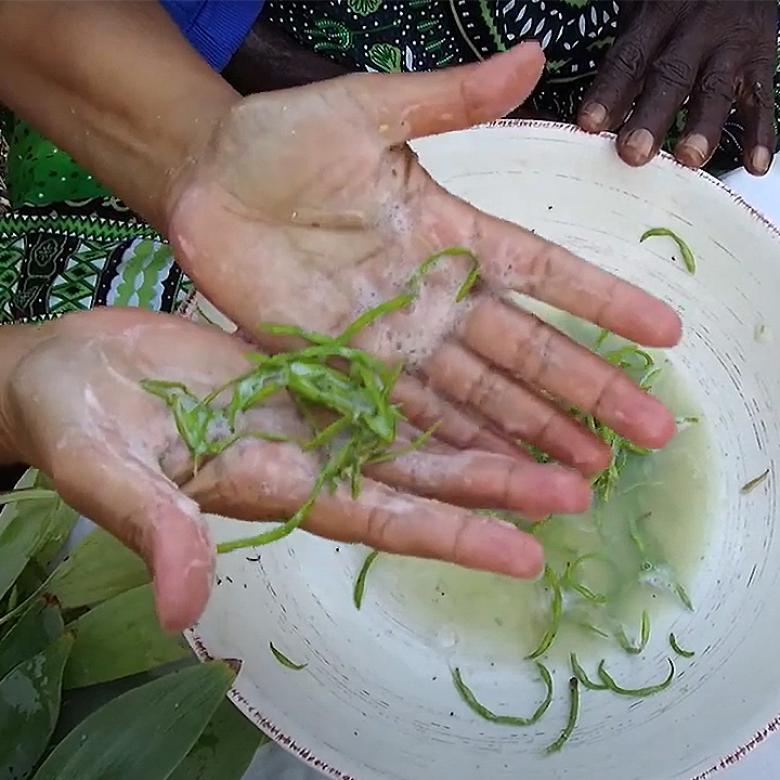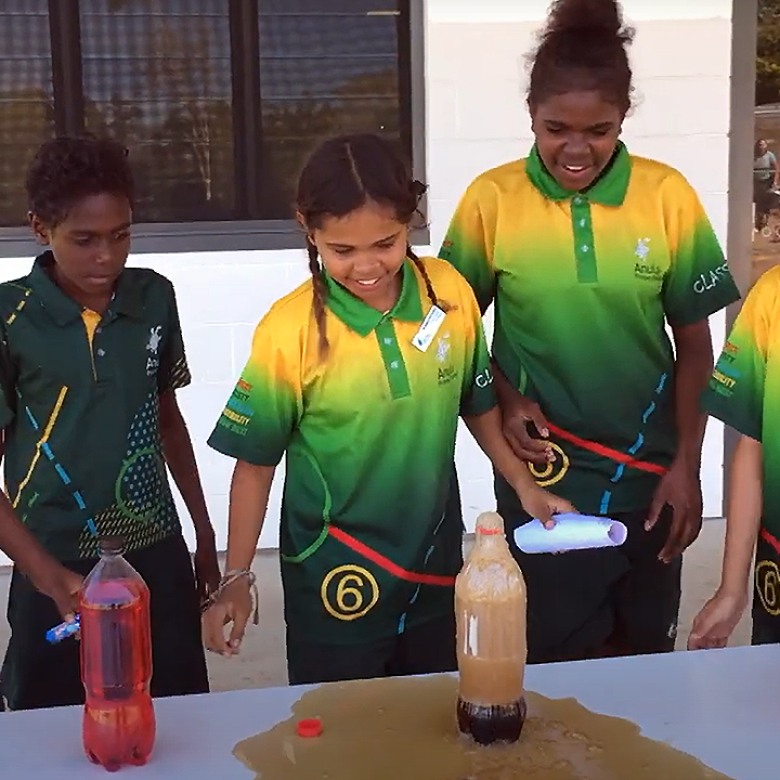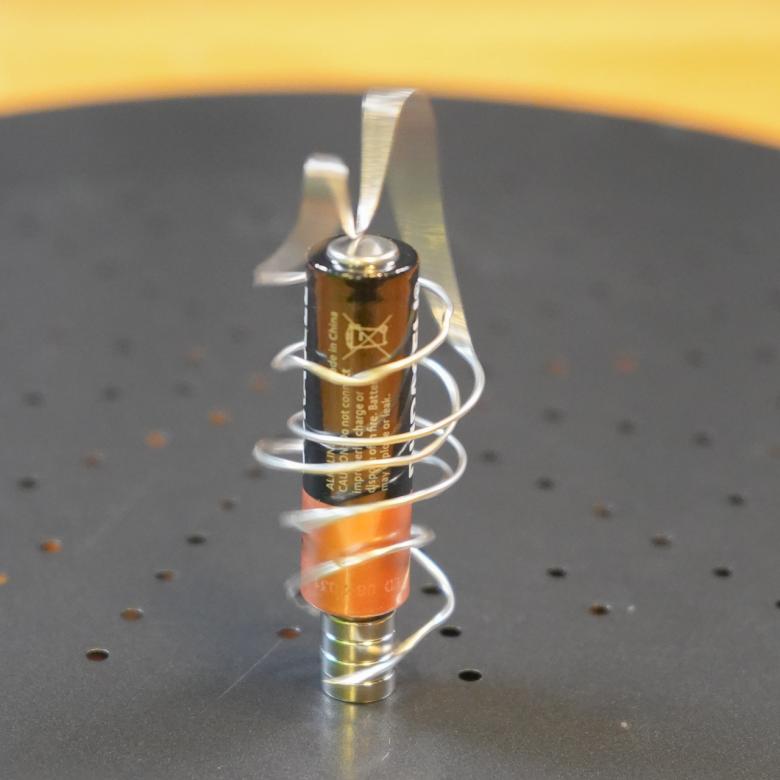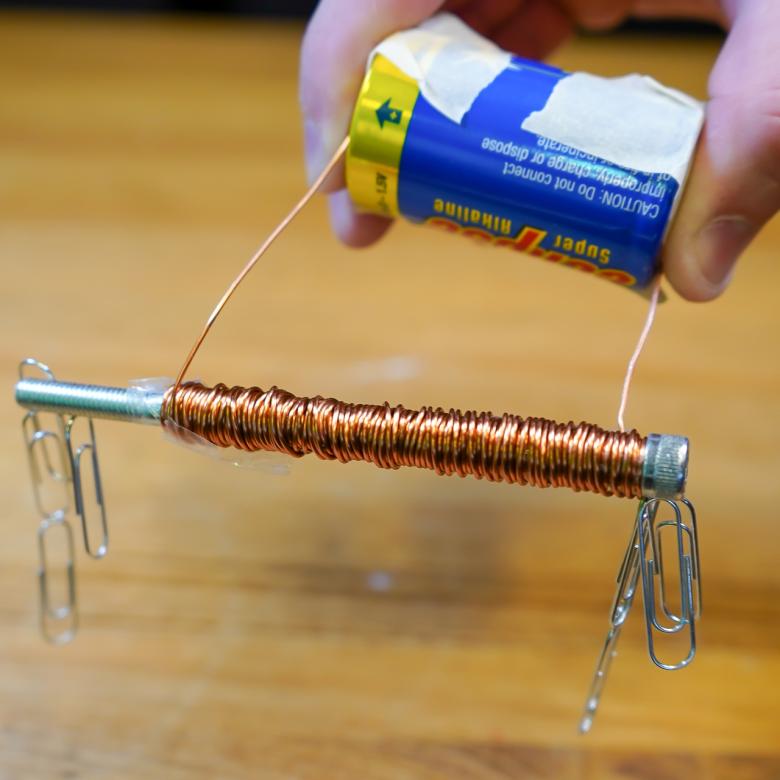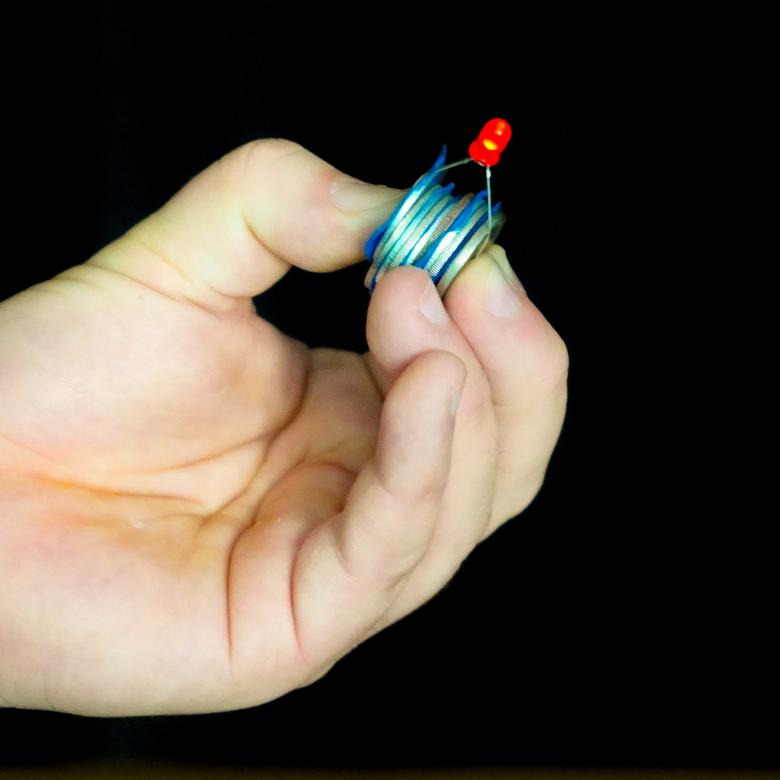About
- Safety glasses
- Dishwashing gloves
- A measuring cup
- 100 mL of 6% hydrogen peroxide
- An empty plastic bottle (a 1.25 L soft drink bottle works well – one that won’t tip over too easily)
- A large plastic tray or baking dish
- A funnel
- Dishwashing detergent
- Liquid food colouring (any type except cochineal)
- A small cup
- A sachet of dry yeast
- A tablespoon
- Warm water
- Different-shaped bottles or containers (optional)
What to do
- Gather your materials on a flat surface.
- Put on safety glasses and gloves.
- Pour 100 mL of hydrogen peroxide into the measuring cup.
- Put the plastic bottle onto the plastic tray or baking dish.
- Place the funnel in the plastic bottle.
- Pour the hydrogen peroxide into the plastic bottle through the funnel.
- Remove the funnel.
- Add a squirt of dishwashing detergent to the plastic bottle.
- Add a squirt of food colouring to the plastic bottle.
- Empty the sachet of dry yeast into the small cup and add 4 tablespoons of warm water. Mix well.
- Place the funnel in the plastic bottle.
- Quickly pour the yeast mixture through the funnel into the plastic bottle.
- Quickly remove the funnel, stand back and watch what happens.
Questions to ask
Could you make the stream of foam higher? Try using a bottle with a wider or narrower neck.
Could you achieve more foamy goodness? Try changing the quantities of the ingredients.
What else could change the results? Try leaving out the dishwashing detergent.
What's happening
The foam is made as the dishwashing detergent traps tiny oxygen bubbles inside the bottle. Thick foam oozes out the top of the bottle, like toothpaste squeezed out of its tube. It’s big enough for an elephant!
Hydrogen peroxide (also written by its chemical formula H2O2) is a chemical made up of hydrogen and oxygen. Under the right conditions, a chemical reaction can cause the hydrogen peroxide to break down to water (H2O) and oxygen (O2). The chemical equation for this reaction is:
2H2O2 → 2H2O + O2
When a chemical breaks down into smaller molecules, that’s called a decomposition reaction. This decomposition reaction is exothermic, which means that it gives off heat. Touch the sides of the bottle after the experiment. The plastic should feel warm.
The yeast acts as a catalyst. A catalyst speeds up a chemical reaction. The yeast splits the oxygen off the hydrogen peroxide. The dishwashing detergent traps that oxygen, making lots of tiny bubbles.
Did you know
Hydrogen peroxide is the main ingredient in bleach. Bleach is used to break down colours and make things white. It is used a lot for cleaning. It is also found in hair dye. Hydrogen peroxide bleaches the natural colour pigments in human hair.
Our bodies naturally make hydrogen peroxide and catalase, the part of yeast that helps break down hydrogen peroxide. As we get older, our bodies make less catalase. With less catalase to break down the hydrogen peroxide, the hydrogen peroxide causes our hair to lose its colour – so it turns grey or white.


